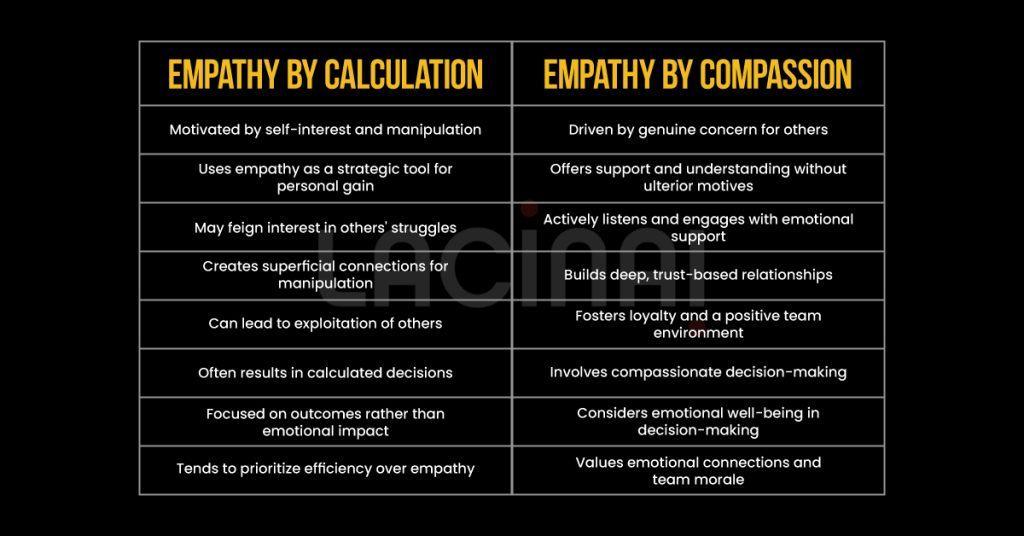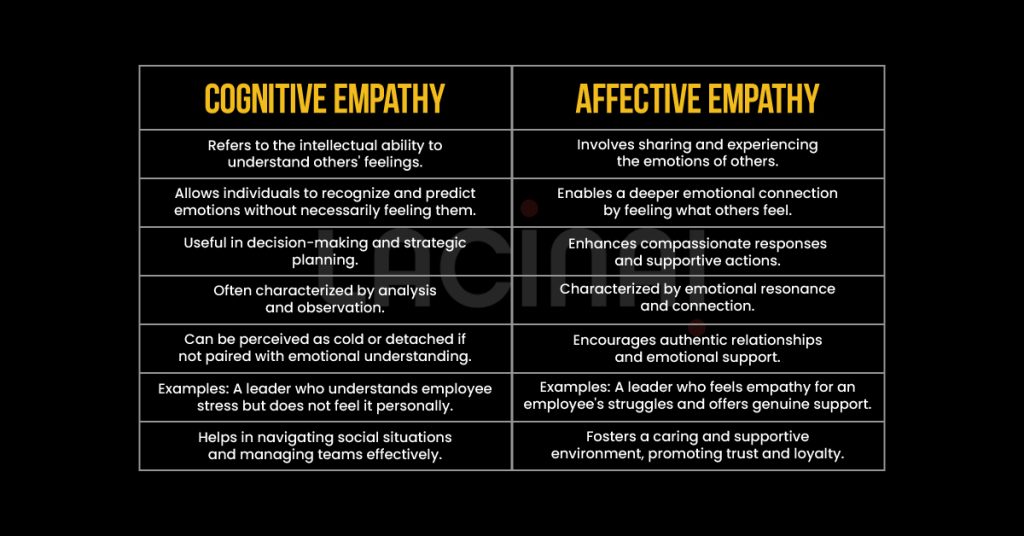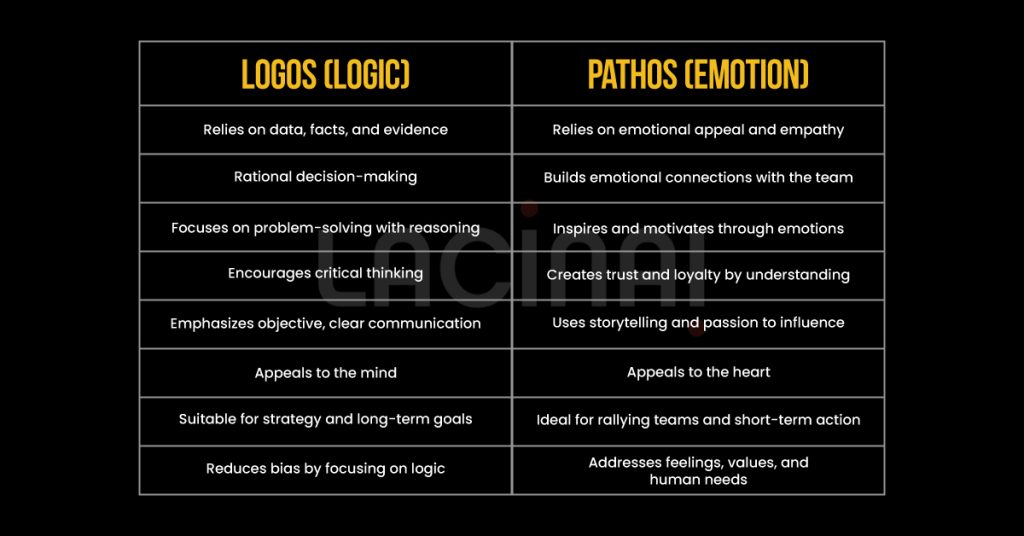Antoni Lacinai
I get that question sometimes
First, I don’t think there are that many, (although I think that Thomas Erikson might have more insights on that).
Second, separate empathy like this: Empathy by calculation and Empathy by compassion
• Calculation vs Compassion
• Cognitive vs Affective
• Logos vs Pathos
The former is about maximizing your chance of survival and advancement
The latter is more about caring for the other person’s well-being.
The former can also be done by AI. Or a psychopath.
The latter is deeply human. You need emotional intelligence.
What are your thoughts about this?
By Team Antoni Explains
Leadership often involves power and decision-making, two areas where psychopaths seem to excel. But why do psychopaths gravitate toward leadership roles, and why do they succeed? Let’s break down the traits that make psychopaths effective in leadership and explore the potential consequences of their influence.
What is Psychopathy leadership?
Psychopathy leadership refers to the presence of psychopathic traits in individuals who hold leadership positions. Psychopathy is characterized by traits such as a lack of empathy, superficial charm, manipulativeness, impulsivity, and a disregard for the rights and feelings of others. When these traits manifest in a leadership role, it can have significant negative consequences for the organization and its people.

Let’s explore these differences and why certain traits might make psychopathy appear more common in leadership roles.
Traits of Psychopaths That Make Them Effective Leaders
Empathy by Calculation vs. Empathy by Compassion
In leadership, you’ll often find two distinct types of empathy at play.
Empathy by Calculation: This type of empathy is more about understanding others’ feelings to manipulate or advance one’s agenda. Leaders with this trait might appear concerned, but their actions are often calculated to maximize personal gain or survival in a competitive environment. It’s not genuine compassion but rather a strategic tool.
Example: A leader who feigns interest in an employee’s struggles to extract more productivity from them.
Empathy by Compassion: This is the true, deeply human form of empathy. It’s about understanding and caring for the well-being of others with no ulterior motives. Compassionate leaders build trust and loyalty because their concern is authentic, and based on an emotional connection.
Example: A leader who actively listens to employees, showing concern and offering support without expecting something in return.

Cognitive vs. Affective Empathy
Understanding the distinction between cognitive and affective empathy is crucial when analyzing leadership traits.
Cognitive Empathy: This refers to the intellectual ability to recognize and understand what others feel. It’s about knowing, not necessarily feeling, which means that leaders can predict others’ emotions and reactions without truly sharing in those emotions. This can be useful in decision-making but doesn’t inherently include compassion.
Affective Empathy: This type is about sharing the feelings of others. Leaders with affective empathy can feel what their teams are experiencing, leading to more compassionate decision-making.

Logos vs. Pathos in Leadership
In leadership, decisions often lie between Logos (logic) and Pathos (emotion). Leaders leaning too heavily on logos may appear cold or calculated, while those relying on pathos tend to be more compassionate and empathetic. Psychopaths, often unable to genuinely connect emotionally, tend to focus on logos, making decisions purely from a rational standpoint—calculating outcomes to suit their needs without considering the emotional impact.
Logos Leadership: Rational, data-driven decisions. This leadership style values efficiency over emotions and can sometimes be mistaken for a lack of empathy. Leaders in this category may use empathy by calculation.
Example: Implementing a layoff strictly based on budget cuts, without considering how it affects employees emotionally.
Pathos Leadership: Emotionally driven decisions, where leaders genuinely care about how their choices impact people. This style is often seen in compassionate leaders.
Example: A leader who restructures departments to ensure minimal layoffs, focusing on employees’ emotional well-being.

Why Psychopaths Thrive in Certain Leadership Roles
Given the nature of competitive environments and high-stress decision-making, some psychopathic traits—such as a lack of fear, charm, and ruthlessness—can seem advantageous. These traits might help a psychopath rise through leadership ranks, particularly in industries that prioritize results over relationships.
However, it’s important to note that not all leaders exhibiting calculated behaviors are psychopaths. Many simply have strong cognitive empathy, focusing on logic and outcomes while managing emotional detachment to handle difficult decisions.
Psychopaths and AI: What’s the Connection?
Interestingly, psychopaths and AI share a common characteristic: both can perform tasks requiring empathy by calculation. Just as AI can predict human emotions and responses based on data, psychopaths can mimic emotional responses without truly feeling them. This allows them to navigate social situations successfully, though without the compassion that would normally be present in human interactions.
FAQS
Psychopaths are drawn to leadership because it offers power, control, and influence, which align with their manipulative tendencies.
No, not all leaders are psychopaths. While some may have psychopathic traits, many successful leaders are empathetic and ethical.
While they may be effective in the short term, the long-term effects of psychopathic leadership often include workplace toxicity and ethical issues.
Organizations can implement thorough psychological assessments, prioritize emotional intelligence, and foster a culture of ethical leadership.
It taught me the importance of emotional intelligence, setting clear boundaries, resilience under pressure, and the ability to handle difficult personalities while maintaining a positive and productive team environment.
Conclusion
While it might seem that leadership is filled with psychopaths, it’s more accurate to say that certain psychopathic traits—like calculated empathy—are advantageous in some leadership roles. However, true, compassionate leaders stand out for their emotional intelligence and genuine care for their teams.
If you’re seeking leadership that blends compassion with strategic thinking or want to cultivate your empathetic leadership skills, consider learning more about emotional intelligence and how it impacts both personal and professional success.




